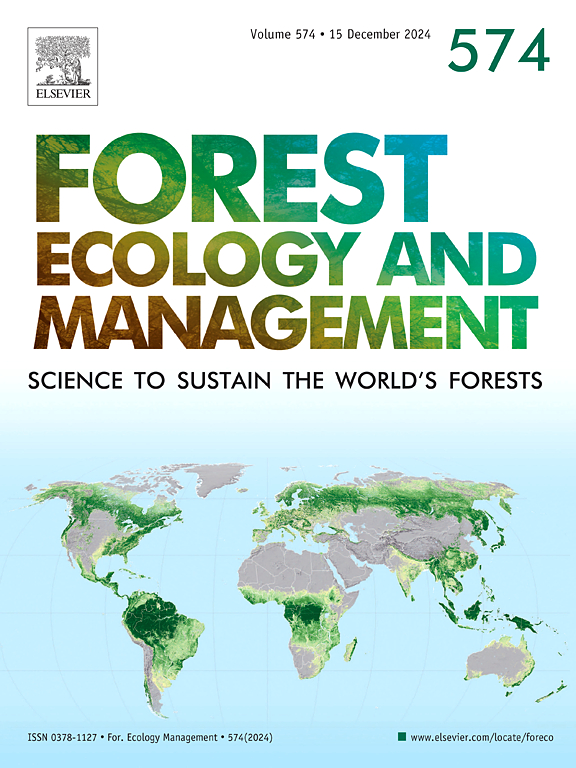Transition to selection cutting management in mature Scots pine stands: Short-term effect on carbon budget
IF 3.7
2区 农林科学
Q1 FORESTRY
引用次数: 0
Abstract
The study demonstrates the short-term effect of transitional selection cutting on annual carbon (C) budget in mature Scots pine stands. The applied partial harvesting is considered as selection cutting for transitioning from even-aged forest management to further continuous cover forest management. As the used harvesting method is suggested to be an alternative to clear-cut (CC), then its short-term effect on annual net ecosystem production (NEP) was studied simultaneously with clear-cutting. Partial harvesting decreased the annual net primary production of the stands by 20–40 % compared to the unmanaged plots, however, the effect on annual NEP was multifaceted and related to the species composition of the understorey and the soil microclimate. In the first post-cutting year, the NEP of partially harvested stands varied from the near- C neutral (-0.2 t C ha−1 yr−1) status up to C sinks (0.5–1.9 t C ha−1 yr−1), and all studied CC areas acted as C sources, emitting 2.4–4.1 t C ha−1 yr−1. However, the annual soil heterotrophic respiration flux of the CC sites retained the same magnitude as in partial cutting treatments or was even smaller. The diverse trends of short-term changes in NEP in post-harvest stands indicate that the impact of initial selection cutting on the C fluxes in mature Scots pine stands was highly site specific, related mainly to complex changes in soil Rh and stand characteristics.
求助全文
约1分钟内获得全文
求助全文
来源期刊

Forest Ecology and Management
农林科学-林学
CiteScore
7.50
自引率
10.80%
发文量
665
审稿时长
39 days
期刊介绍:
Forest Ecology and Management publishes scientific articles linking forest ecology with forest management, focusing on the application of biological, ecological and social knowledge to the management and conservation of plantations and natural forests. The scope of the journal includes all forest ecosystems of the world.
A peer-review process ensures the quality and international interest of the manuscripts accepted for publication. The journal encourages communication between scientists in disparate fields who share a common interest in ecology and forest management, bridging the gap between research workers and forest managers.
We encourage submission of papers that will have the strongest interest and value to the Journal''s international readership. Some key features of papers with strong interest include:
1. Clear connections between the ecology and management of forests;
2. Novel ideas or approaches to important challenges in forest ecology and management;
3. Studies that address a population of interest beyond the scale of single research sites, Three key points in the design of forest experiments, Forest Ecology and Management 255 (2008) 2022-2023);
4. Review Articles on timely, important topics. Authors are welcome to contact one of the editors to discuss the suitability of a potential review manuscript.
The Journal encourages proposals for special issues examining important areas of forest ecology and management. Potential guest editors should contact any of the Editors to begin discussions about topics, potential papers, and other details.
 求助内容:
求助内容: 应助结果提醒方式:
应助结果提醒方式:


